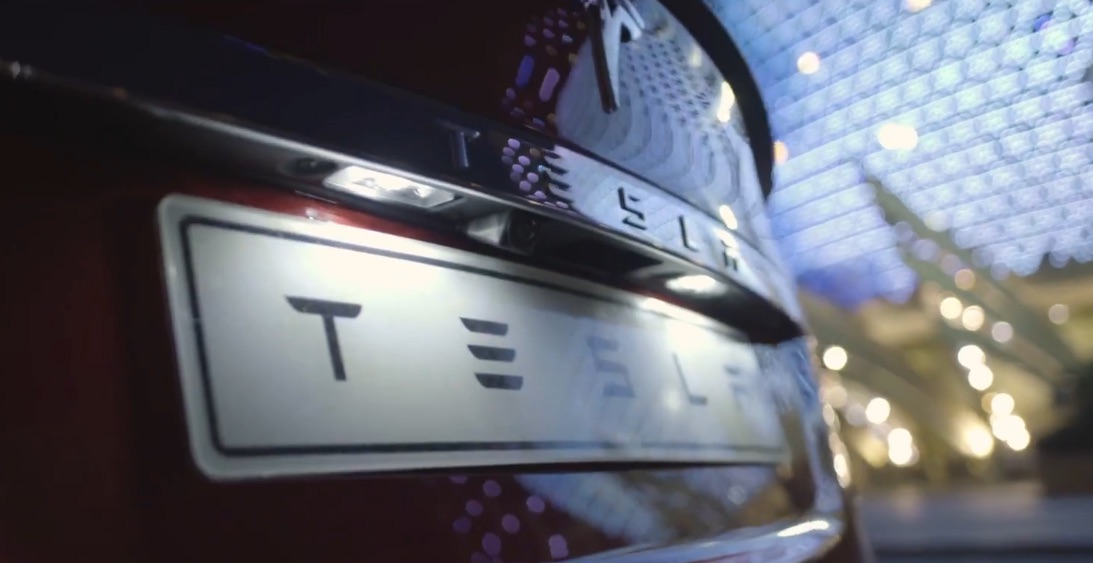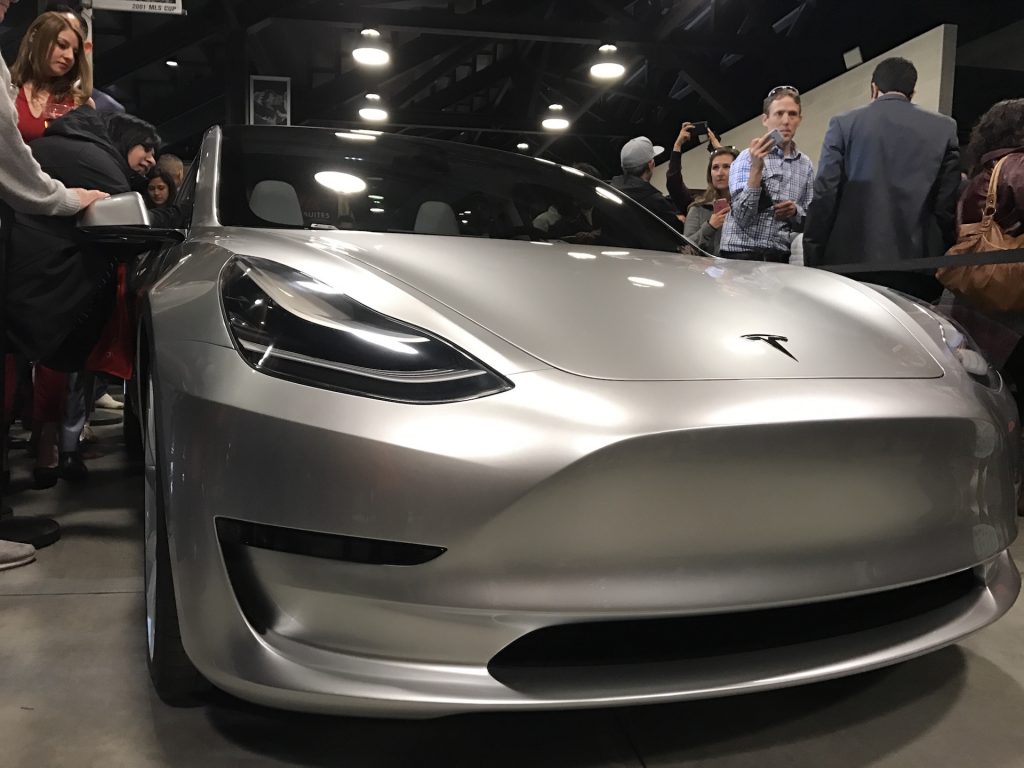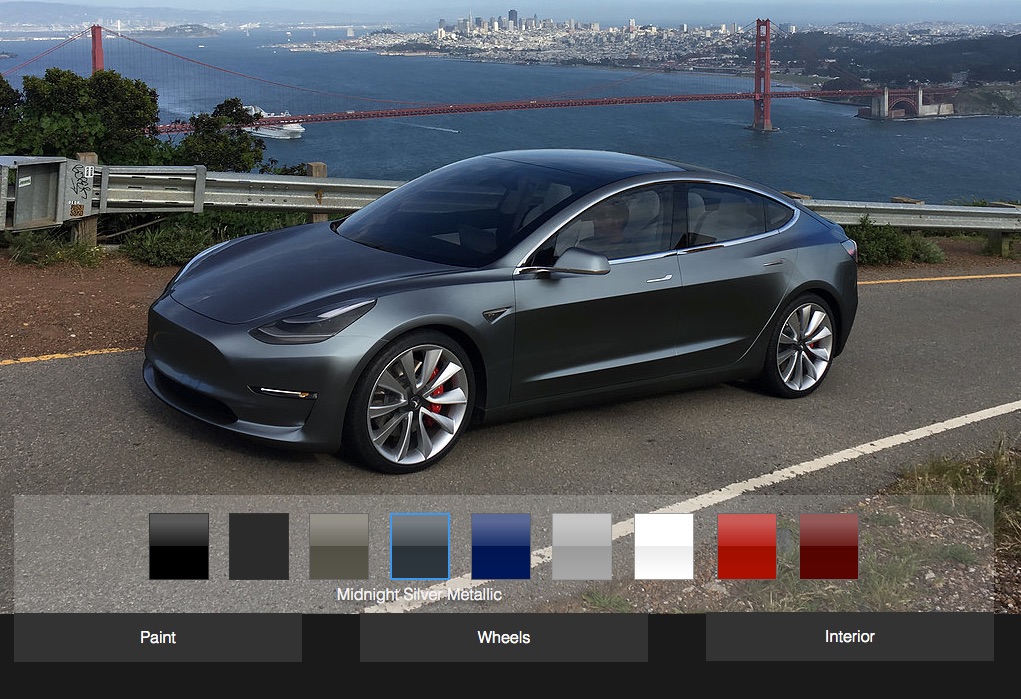News
Tesla Top 5 Week in Review: Model 3 “Founders Series”, a test drive gone wrong, Tesla insurance, and more

The news this week out of Tesla focused a lot on the Q4 earnings call and the 2016 annual financial report, with overall good numbers and analyst reactions. Part of that confidence came from the anticipated production of the new Model 3, which will be released to employees first as part of a feedback loop. In other areas, an overnight test drive program for prospective buyers turned bad when a driver behind a P100D lost control and crashed. Generally, Teslas score in the highest levels of automotive safety, which is why Tesla may be considering offering customers a package where purchase costs, insurance, and maintenance are bundled together. And, finally, more good news poured out of Nevada, where the Tesla Gigafactory is under construction. All that and more: read on, Teslarati fans….
Tesla beats Wall St. estimates: $7 billion revenue; record Model S, X orders; Model 3 production starts in July
Tesla released its 2016 Q4 financial results and shareholders letter as well as its annual 2016 overall financial report. With Q4 earnings loss of $.69 per share, Tesla came in at the lower end of the estimate spectrum. Revenue was $2.28 billion versus an estimate of $2.13 billion. For the full year 2016, revenues were up 73% from 2015 at $7 billion. Q4 Model S and X vehicles came in at record high sales numbers. In the days prior to the financial announcement, Tesla stock values had soared to nearly all-time highs.
Tesla Model 3 Design Studio expected in June, “Founders Series” will go to employees first
The Tesla Model 3 configurator is about three or four months away, according to Tesla CEO Elon Musk. Model will be released incrementally for testing and feedback. First deliveries will be offered to employees as part of an internal “feedback loop” to generate information before customers experience the car. Following the employee offering, west coast Tesla owners with geographic proximity to the Fremont factory will have the next opportunity to experience the Model 3. After that, the geographical expansion will continue to other regions and other lucky new Tesla customers.
Tesla’s “overnight test drive” program ends badly for one P100D driver
Last summer, a registration form appeared on the Tesla website in which prospective buyers could apply for an overnight test drive program. A prospective customer near Canmore, Alberta was behind the wheel of a P100D, which is Tesla’s fastest production car, when it crashed into guardrails. Authorized Tesla body shop Contemporary Coachworks declined to release background information regarding the incident, including the Tesla’s speed at the time of impact. Pictures taken afterward do seem to show significant damage, which leads one to wonder what insurance costs will look like for the test run. Maybe the next top featured story of the week isn’t just coincidence….
Tesla looks to bundle insurance policy into the purchase of a car
In Asia, Tesla offers a package to customers that includes the costs of purchase, insurance, and maintenance. That’s a model that Tesla would like to bring to the U.S., according to company information provided this week. This package may be offered in conjunction with external insurance providers or as in-house option. Providing insurance, in addition to other essential coverage, would be another way that Tesla would disrupt a business-as-usual set of practices from top automakers. The company has the capacity to offer this bundled package because Teslas have a strong safety record, which underlies the usual perils inherent in car insurance.
Nevada official says Tesla Gigafactory has over 1,000 workers and is hiring 150-200 more each month
At at time when the talk of the nations is jobs, jobs, Tesla’s job creation numbers at its Gigafactory in northern Nevada are one bright moment in an otherwise stagnant employment scene across the country. With hiring levels at about 150 to 200 more every month, Executive Director Steve Hill told the Senate Finance Committee last week during a budget review meeting that the California-based electric carmaker and energy company may be able to have 3,200 workers by March, 2018. Job creation at the Gigafactory reinforces Tesla’s original commitments when Nevada provided a $1.3 billion tax incentive package to Tesla at a time when the company’s name recognition was quite low.

News
Elon Musk’s Grokipedia surges to 5.6M articles, almost 79% of English Wikipedia
The explosive growth marks a major milestone for the AI-powered online encyclopedia, which was launched by Elon Musk’s xAI just months ago.

Elon Musk’s Grokipedia has grown to an impressive 5,615,201 articles as of today, closing in on 79% of the English Wikipedia’s current total of 7,119,376 articles.
The explosive growth marks a major milestone for the AI-powered online encyclopedia, which was launched by Elon Musk’s xAI just months ago. Needless to say, it would only be a matter of time before Grokipedia exceeds English Wikipedia in sheer volume.
Grokipedia’s rapid growth
xAI’s vision for Grokipedia emphasizes neutrality, while Grok’s reasoning capabilities allow for fast drafting and fact-checking. When Elon Musk announced the initiative in late September 2025, he noted that Grokipedia would be an improvement to Wikipedia because it would be designed to avoid bias.
At the time, Musk noted that Grokipedia “is a necessary step towards the xAI goal of understanding the Universe.”
Grokipedia was launched in late October, and while xAI was careful to list it only as Version 0.1 at the time, the online encyclopedia immediately earned praise. Wikipedia co-founder Larry Sanger highlighted the project’s innovative approach, noting how it leverages AI to fill knowledge gaps and enable rapid updates. Netizens also observed how Grokipedia tends to present articles in a more objective manner compared to Wikipedia, which is edited by humans.
Elon Musk’s ambitious plans
With 5,615,201 total articles, Grokipedia has now grown to almost 79% of English Wikipedia’s article base. This is incredibly quick, though Grokipedia remains text-only for now. xAI, for its part, has now updated the online encyclopedia’s iteration to v0.2.
Elon Musk has shared bold ideas for Grokipedia, including sending a record of the entire knowledge base to space as part of xAI’s mission to preserve and expand human understanding. At some point, Musk stated that Grokipedia will be renamed to Encyclopedia Galactica, and it will be sent to the cosmos.
“When Grokipedia is good enough (long way to go), we will change the name to Encyclopedia Galactica. It will be an open source distillation of all knowledge, including audio, images and video. Join xAI to help build the sci-fi version of the Library of Alexandria!” Musk wrote, adding in a later post that “Copies will be etched in stone and sent to the Moon, Mars and beyond. This time, it will not be lost.”
News
Tesla Model 3 becomes Netherlands’ best-selling used EV in 2025
More than one in ten second-hand electric cars sold in the country last year was a Tesla Model 3.

The Tesla Model 3 became the most popular used electric car in the Netherlands in 2025, cementing its dominance well beyond the country’s new-car market.
After years at the top of Dutch EV sales charts, the Model 3 now leads the country’s second-hand EV market by a wide margin, as record used-car purchases pushed electric vehicles further into the mainstream.
Model 3 takes a commanding lead
The Netherlands recorded more than 2.1 million used car sales last year, the highest level on record. Of those, roughly 4.8%, or about 102,000 vehicles, were electric. Within that growing segment, the Tesla Model 3 stood far ahead of its competitors.
In 2025 alone, 11,338 used Model 3s changed hands, giving the car an 11.1% share of the country’s entire used EV market. That means more than one in ten second-hand electric cars sold in the country last year was a Tesla Model 3, Auto Week Netherlands reported. The scale of its lead is striking: the gap between the Model 3 and the second-place finisher, the Volkswagen ID3, is more than 6,700 vehicles.
Rivals trail as residual values shape rankings
The Volkswagen ID.3 ranked a distant second, with 4,595 used units sold and a 4.5% market share. Close behind was the Audi e-tron, which placed third with 4,236 registrations. As noted by Auto Week Netherlands, relatively low residual values likely boosted the e-tron’s appeal in the used market, despite its higher original price.
Other strong performers included the Kia Niro, the Tesla Model Y, and the Hyundai Kona, highlighting continued demand for compact and midsize electric vehicles with proven range and reliability. No other model, however, came close to matching the Model 3’s scale or market presence.
News
Tesla Model Y Standard Long Range RWD launches in Europe
The update was announced by Tesla Europe & Middle East in a post on its official social media account on X.

Tesla has expanded the Model Y lineup in Europe with the introduction of the Standard Long Range RWD variant, which offers an impressive 657 km of WLTP range.
The update was announced by Tesla Europe & Middle East in a post on its official social media account on X.
Model Y Standard Long Range RWD Details
Tesla Europe & Middle East highlighted some of the Model Y Standard Long Range RWD’s most notable specs, from its 657 km of WLTP range to its 2,118 liters of cargo volume. More importantly, Tesla also noted that the newly released variant only consumes 12.7 kWh per 100 km, making it the most efficient Model Y to date.
The Model Y Standard provides a lower entry point for consumers who wish to enter the Tesla ecosystem at the lowest possible price. While the Model 3 Standard is still more affordable, some consumers might prefer the Model Y Standard due to its larger size and crossover form factor. The fact that the Model Y Standard is equipped with Tesla’s AI4 computer also makes it ready for FSD’s eventual rollout to the region.
Top Gear’s Model Y Standard review
Top Gear‘s recent review of the Tesla Model Y Standard highlighted some of the vehicle’s most notable features, such as its impressive real-world range, stellar infotainment system, and spacious interior. As per the publication, the Model Y Standard still retains a lot of what makes Tesla’s vehicles well-rounded, even if it’s been equipped with a simplified interior.
Top Gear compared the Model Y Standard to its rivals in the same segment. “The introduction of the Standard trim brings the Model Y in line with the entry price of most of its closest competition. In fact, it’s actually cheaper than a Peugeot e-3008 and costs £5k less than an entry-level Audi Q4 e-tron. It also makes the Ford Mustang Mach-E look a little short with its higher entry price and worse range,” the publication wrote.













